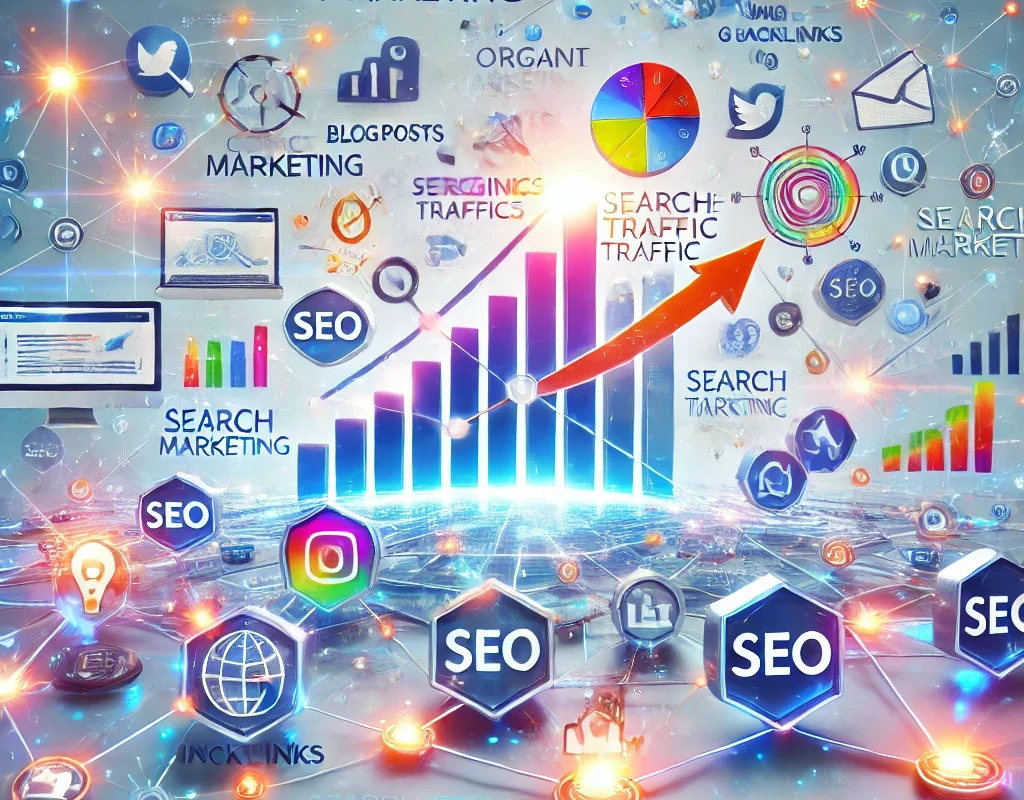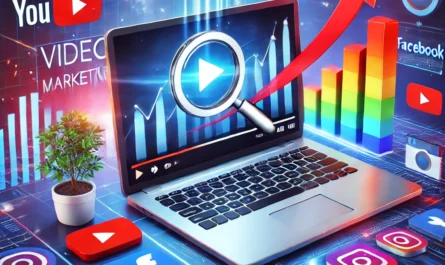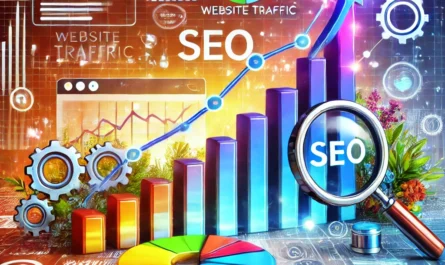In today’s digital world, mastering the art of content marketing is crucial for businesses looking to gain an edge in search engine optimization (SEO). SEO is the backbone of digital marketing, driving organic traffic and ensuring a website’s visibility on search engines like Google. But how exactly does content marketing tie into this? Simply put, without great content, your SEO efforts won’t reach their full potential. Content serves as the vehicle that delivers your keywords, attracts backlinks, and engages your audience, all of which are essential to ranking higher on search engine results pages (SERPs).
This article will explore how to use content marketing to boost your SEO effectively. By creating high-quality, targeted content that resonates with your audience, you can improve your online visibility, gain more traffic, and build lasting relationships with customers.
Content Marketing and SEO: A Powerful Duo
Defining Content Marketing
Content marketing is a strategic approach focused on creating and distributing valuable, relevant, and consistent content to attract and engage a clearly defined audience. The goal is to build trust, authority, and loyalty by providing information that solves problems or fulfills the needs of potential customers.
The Relationship Between Content Marketing and SEO
At the heart of SEO is content. The two work hand-in-hand, with content marketing driving the engine of SEO success. Search engines like Google prioritize websites that consistently provide fresh, relevant, and high-quality content. The more useful and engaging your content is, the more likely search engines will reward your website with higher rankings.
Content marketing also enhances SEO by incorporating relevant keywords naturally, optimizing on-page elements, and earning backlinks from reputable websites. Through content marketing, you’re not just catering to algorithms; you’re providing real value to users, which is the ultimate goal of any search engine.
Creating High-Quality, Engaging Content
Importance of Unique, Informative Content
When it comes to SEO, the phrase “content is king” remains true. Search engines are designed to connect users with the most relevant and useful content. Therefore, creating unique, informative, and engaging content is paramount. Whether it’s blog posts, videos, or infographics, your content needs to stand out, provide value, and address the pain points of your audience.
How Content Quality Influences SEO
High-quality content improves your SEO by increasing dwell time (the amount of time a visitor spends on your site), reducing bounce rates, and encouraging social shares and backlinks. These factors signal to search engines that your content is valuable and trustworthy, which can boost your rankings. On the flip side, poor-quality content or content stuffed with keywords can hurt your SEO, driving away visitors and earning penalties from search engines.
Keyword Research: The Foundation of SEO
Importance of Keyword Research in Content Marketing
Keyword research is a critical aspect of SEO and content marketing. By identifying the search terms that your target audience is using, you can create content that directly addresses their needs and interests. This not only improves your chances of ranking for those terms but also ensures that your content is highly relevant to the people searching for it.
Long-tail Keywords for Targeted Traffic
While it’s important to target high-traffic keywords, long-tail keywords (phrases that are more specific and usually longer) can often yield better results in terms of traffic quality. These keywords tend to have lower competition and are used by searchers who are closer to making a purchase decision. Incorporating long-tail keywords into your content helps attract a more focused audience and can significantly boost your conversion rates.
Content Planning and Strategy
Developing a Content Strategy for SEO Success
A well-structured content strategy is the backbone of a successful content marketing and SEO campaign. This strategy should define your goals, target audience, and the type of content you’ll produce. It should also outline how often you’ll post and how each piece of content fits into your broader SEO strategy.
Content Calendars and SEO
One of the most effective tools in content marketing is the content calendar. It helps you plan and organize your content production schedule, ensuring that you publish fresh, consistent content. Search engines favor websites that regularly update their content, so maintaining a content calendar can help keep your site relevant and improve your SEO rankings over time.
On-Page SEO Techniques for Content
Optimizing Titles, Headers, and Meta Descriptions
On-page SEO refers to optimizing elements on your website to make them more search engine-friendly. This includes using relevant keywords in titles, headers, and meta descriptions to help search engines understand what your content is about. Optimized meta tags improve your click-through rates from search engine results, while well-crafted headers make your content easier to read and navigate for both users and search engines.
Internal Linking Strategies for SEO
Internal linking is another crucial element of on-page SEO. By linking related content within your website, you guide both users and search engines through your site more effectively. Internal links help distribute page authority and make it easier for search engines to crawl your website, improving the visibility of your pages.
Content Types That Boost SEO
Blog Posts and Articles
Regularly publishing blog posts and articles is one of the most straightforward ways to improve your SEO. Search engines love fresh content, and blog posts give you an opportunity to target a wide range of keywords. They also provide a platform to showcase your expertise, share valuable insights, and connect with your audience on a deeper level.
Videos, Infographics, and Other Visual Content
Visual content, such as videos and infographics, can significantly enhance your SEO efforts. Videos are especially effective because they engage users, increasing time spent on your site. Infographics, meanwhile, are highly shareable, which can lead to more backlinks and improved SEO. Search engines are increasingly prioritizing multimedia content, so incorporating visuals into your strategy can give you a competitive edge.
You Can Also Read : How to Improve Your SEO Rankings with On-Page Optimization
Optimizing for Search Intent
Understanding Search Intent and Its Impact on SEO
Search intent refers to the reason behind a user’s query—whether they’re looking for information, making a purchase, or seeking a specific website. Understanding search intent is critical for content marketing and SEO success. By aligning your content with the intent behind user searches, you increase the likelihood of satisfying their needs, which improves your rankings and engagement.



